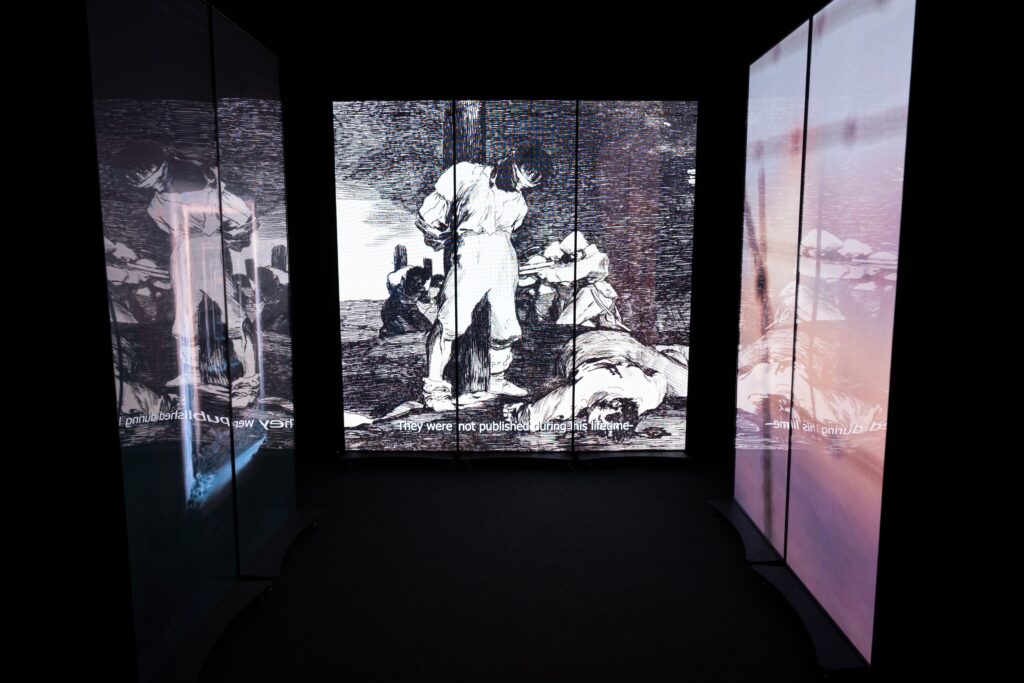Prints of Goya’s Disasters of War from the collections of Fundación MAPFRE went on display at the Grand Master’s Palace in Valletta, marking the first time an entire exhibition in Malta is dedicated to the Spanish master.
Francisco José de Goya y Lucientes (1746-1828) is considered to be the most important Spanish artist of the late 18th and early 19th centuries.
Disasters of War is a series of 80 etchings with which Goya immortalised the brutality of the Peninsular War (1808-1814) between France and Spain – a violent convulsion of anarchy, starvation and slaughter with long-lasting catastrophic effects.
The series (c. 1810-15) is deemed to be Goya’s personal reflection on the devastating effects of the war on the people, showing scenes that are raw and unsettling in their depiction of battlefield horror and dehumanisation. Goya may have witnessed some of the events depicted in the prints himself. However, it is not possible to locate specific places.
The scenes are divided into three parts. The first 47 focus on incidents from the war and show the consequences on individual soldiers and civilians; the next ones record the effects of the famine that hit Madrid in 1811-12, before the city was liberated from the French; and the final 17, which are more allegorical, reflect the bitter disappointment of progressive thinkers when the restored Bourbon monarchy, encouraged by the Catholic hierarchy, rejected social reform.
“Goya’s Disasters of War nowadays still urge us to awaken reason, reflect and act with conscience”
With this work, Goya breaks away from a number of artistic traditions. In fact, Disasters of War is the first example in the history of art where war and its consequences are depicted not as heroic acts, but as the tragedy and barbarism that they truly stand for.
Albeit depicting the war in Spain, Goya’s images could relate to any war – which is what renders this exhibition incredibly powerful and of contemporary relevance.
Mario Cutajar, chairperson of Heritage Malta, organisers of the exhibition, said that Goya is regarded as the last of the old masters, as much as he is considered the first of the moderns. He is the artist of contrasts – an exceptional portraitist, yet highly imaginative; the painter of royalty in their silent palaces, as much as the painter of the people’s hardships and cries. However, the power of Goya’s works, such as the war pieces in this exhibition, are an alarm clock that never rang – humanity has remained blind and deaf to suffering.
The exhibition is sponsored by MAPFRE Malta and the Bank of Valletta (BOV) Foundation.
Elvira Vega, CEO of Fundación MAPFRE, said that Goya’s Disasters of War “nowadays still urge us to awaken reason, reflect and act with conscience”.
Gordon Cordina, chairperson of Bank of Valletta, observed: “Here in Malta, a crossroads of Europe and Africa, we know that peace is built not only by treaties, but by memory, dialogue, and the courage to learn from history. By supporting this exhibition, we reaffirm Malta’s commitment to building trust and dignity for all.”
Etienne Sciberras, CEO of Mapfre Malta, commented that, “As part of the MAPFRE Group’s initiatives, we are reminded of our enduring commitment to social responsibility and cultural engagement. This exhibition is a testament to that legacy.”
The exhibition runs until January 18.
